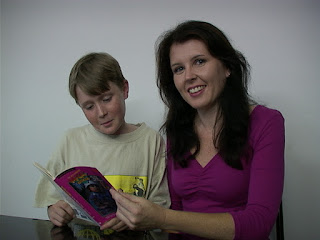The Neurological Impress Method (NIM).
Before the reading the reading guide should ask the child to scan the cover and title of the book. The reading guide should then ask the reader to look at the illustrations and think about similar life experiences. After browsing through the book and discussing each picture he/she is then asked to predict what what he/she thinks will happen in the story.
The reading guide then reads the story to the child by modeling fluent and expressive reading. This will familiarise the him/her with the flow of the language. It makes the reading much more predictable because the meaning of the story will have been dealt with before he/she has to to read. The reading guide then discusses various aspects of the story with the child to clarify and elaborate on interesting features. Unfamiliar vocabulary is also identified and explained.
The next step involves reading orally in unison. The child should be directed to keep pace with the adult reader even if some of the words are not read correctly. If the child happens to trip on a word he/she must catch up to the reading guide to maintain the reading flow. This will develop the ability to read ahead rather than reading word by word. It also enhances fluency because the reader must predict and sample larger chunks of text to maintain the pace and flow.
Often unskilled readers are quite surprised by how quickly their reading improves after only a few sessions.


























